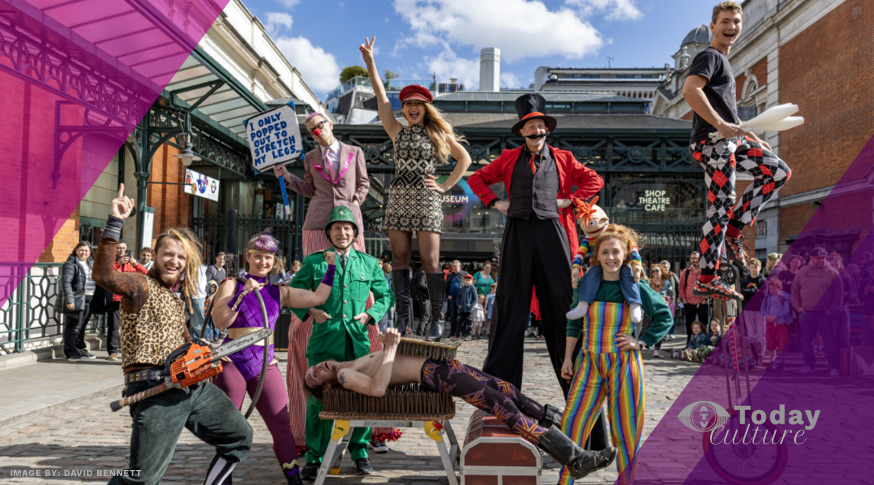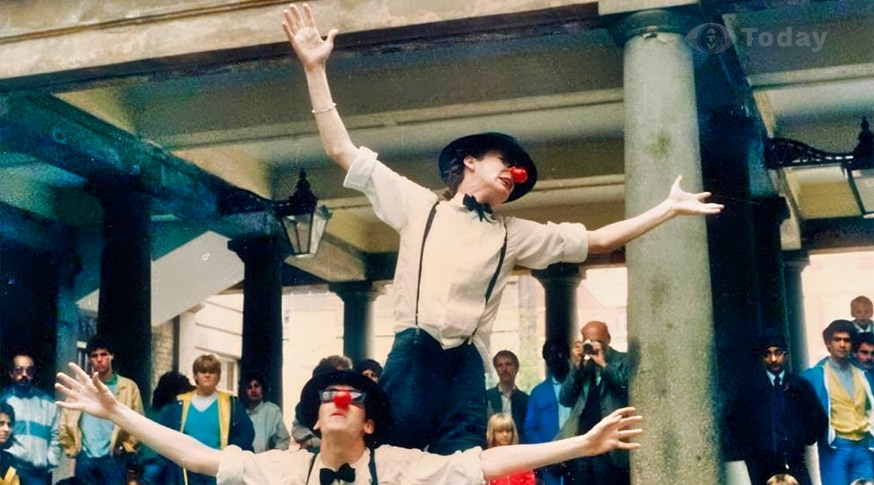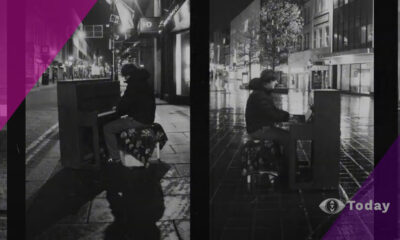
Culture
Covent Garden celebrates 50 years of street performance
This year marks a remarkable milestone for one of London’s most unique cultural institutions. For fifty years, the West Piazza of Covent Garden has been home to world-class street theatre – open, accessible, and, perhaps most remarkably, self-regulated. But its story begins not with celebration, but with resistance.
In 1974, Covent Garden was on the brink of transformation. Major redevelopment plans threatened to erase its historic character, close its bustling fruit and veg market, demolish the historic buildings and turn the area into a private estate of offices and new roads. Local residents, traders, and activists fought back. Their grassroots campaign successfully stopped the plans and reclaimed the area as a public space.
In the wake of that resistance, from 1975, performers began arriving – jugglers, magicians, acrobats – turning the newly preserved piazza into a spontaneous stage. There was no insistence on legal permission, no council-dictated infrastructure, no sponsorship. What emerged was something rare: a public square given purpose by public use – a kind of natural placemaking, shaped not by policy but by people.
At the forefront of this transformation was a company called Alternative Arts, led by Maggie Pinhorn, whose pioneering work helped shape the piazza’s modern cultural identity. Their energy and vision were instrumental in establishing Covent Garden as a space for live performance and creative exchange.

Covent Garden Street Performers Association Archive Photo
Over the following decades, the performers developed their own system to manage the space–rotating pitches, drawing lots, and resolving disputes collectively. It was built not in theory but in practice, evolving through experience rather than external regulation.
To this day, there is no formal authority managing the pitch. No permits. No programming team. Yet the system works. Shows begin on time. Acts are vetted by their peers. The square is respected. Crowds are safe and entertained. For fifty years, the performers have not only maintained the space – they have made it thrive.
“Covent Garden works because we built it,” said CGSPA spokesperson Melvyn Altwarg. “No one had to come in with a policy document – we figured it out on the cobblestones.”
Despite the success of Covent Garden’s self-regulated model, the future of street performance in the square remains uncertain. In 2021, Westminster Council introduced a borough-wide licensing scheme for street performers, including Covent Garden. While many performers across Westminster applied for licenses under the new scheme, the CGSPA collectively politely refused to participate.
Instead, Covent Garden’s performers chose to continue their proven model of self-regulation – technically operating outside the licensing framework, but doing so in order to protect a system that had worked smoothly for decades.
This act of quiet defiance ensured that Covent Garden remained a thriving, well-managed space. But it has also left the performers vulnerable. The council has not provided any formal exemption or recognition of their model. Performers remain at risk of legal enforcement action, and the future of the square is still officially “under review,” – leaving the community in limbo.
The CGSPA is calling for a written commitment from Westminster Council that would officially exempt Covent Garden from restrictive licensing. They point to their successful 40-year track record of self-regulation, strong relationships with local businesses, and consistently low levels of public complaints as evidence that Covent Garden’s model works, and does not require external policing.

Covent Garden Street Performers Association Archive Photo
“We are grateful that for the most part Westminster Council has stepped back from enforcing restrictions and has currently agreed not to take action in order to physically enforce the licence in Covent Garden,” said CGSPA performer and spokesperson Peter Kolofsky. “But we desperately need to see that goodwill put into writing, so that performers aren’t constantly looking over their shoulders.”
One of the defining qualities of Covent Garden’s street theatre is its accessibility. There are no tickets, no gates, and no dress codes. Anyone – of any income level, local or tourist, young or old – can stop and watch. A banker on lunch break watching a man lay upon a bed of nails, is just as welcome as a family stumbling across a chainsaw juggler.
It is one of the few places in central London where high-quality performance is available to all, regardless of income. The audience gives what it can, when the hat is passed, and in return receives world-class entertainment in the heart of the city. It is public art in its purest form. The difference in outcomes between Covent Garden and other parts of Westminster is striking. While Covent Garden’s performers chose to reject the 2021 licensing scheme in favour of their long-standing system of self-regulation, performers in areas like Leicester Square mostly complied with the new framework.
But the performance licensing scheme has been developed and operated by officials with little direct knowledge of how street art functions. The result has been chaotic: unmanaged noise, overcrowding, conflict between acts – and ultimately, as we have now seen; the closure of several once-thriving performance spots.
“Where Covent Garden has operated on trust and cooperation, Westminster’s top-down approach has led to breakdown and silence. Performers have left. Audiences have vanished. A vibrant culture has been boxed in and shut down”. Melvyn Altwarg and Peter Kolofsky – GCSPA spokespeople.
The CGSPA also recognises the recent High Court ruling which resulted in a ban on certain performers in Leicester Square, following a legal challenge brought by Global Radio. While the decision was based on a specific set of legal circumstances and was not made by Westminster Council, it raises wider questions about how street performance is managed in central London.
Although Covent Garden and Leicester Square have very different histories and performance cultures, the CGSPA believes that all public performance spaces deserve thoughtful, effective stewardship, with clear communication and collaboration between councils and artists.
When Westminster first introduced its street entertainment licence in 2021, CGSPA offered a robust alternative framework based on self-regulation – a model that has worked successfully in Covent Garden for 50 years. Unfortunately, this offer was not taken up, and in areas like Leicester Square, enforcement of the current licence has proved inconsistent. Many performers there did take up the license, but without meaningful management, some interpreted it as unrestricted permission, leading to issues with excessive noise and public dissatisfaction.

Covent Garden Street Performers Association Archive Photo
“We believe a better approach is possible – one rooted in trust, experience, and shared responsibility,” said CGSPA spokesperson Melvyn Altwarg. “Covent Garden shows that when street performers are empowered to regulate themselves, it benefits everyone: audiences, local businesses, and the artists themselves.”
The CGSPA stands in solidarity with all performers working across London and hopes that Westminster Council will take this opportunity to engage meaningfully with the street performance community to safeguard creative spaces across the city – including Covent Garden.
“Covent Garden’s success is even more significant in the context of a growing trend: the quiet erosion of public space. Across the UK, once-public squares, plazas, and streets are increasingly owned or controlled by private companies. These “pseudo-public” spaces may appear open, but they come with restrictions on gatherings, on protest, on photography, and on performance.
This privatisation of public life often happens without consultation or visibility. Rules are set by landlords, not communities. Security staff take the place of stewards. Creativity and spontaneity are replaced by curated events and branded experiences. In this climate, Covent Garden’s West Piazza stands as a powerful exception: a public place, used by the public, shaped by those who inhabit it. It has endured not because of corporate oversight, but in spite of it.” Melvyn Altwarg and Peter Kolofsky – GCSPA spokespeople.
As Covent Garden celebrates fifty years of continuous performance, it offers more than nostalgia. It offers a working model – a space run by the people who know it best. It shows what’s possible when trust is placed in communities, not committees. At a time when access to public space is narrowing and the arts are increasingly confined to ticketed venues and gated festivals, Covent Garden remains defiantly open. Its system isn’t theoretical – it’s lived. Its success isn’t designed – it’s earned.
Fifty years of world-class performance. Fifty years of self-management. Fifty years of art that’s open to everyone. The 50th anniversary event is both a joyful public celebration and a quiet reminder: Covent Garden’s Street performers are an essential part of London’s cultural fabric, and their future must be protected.










